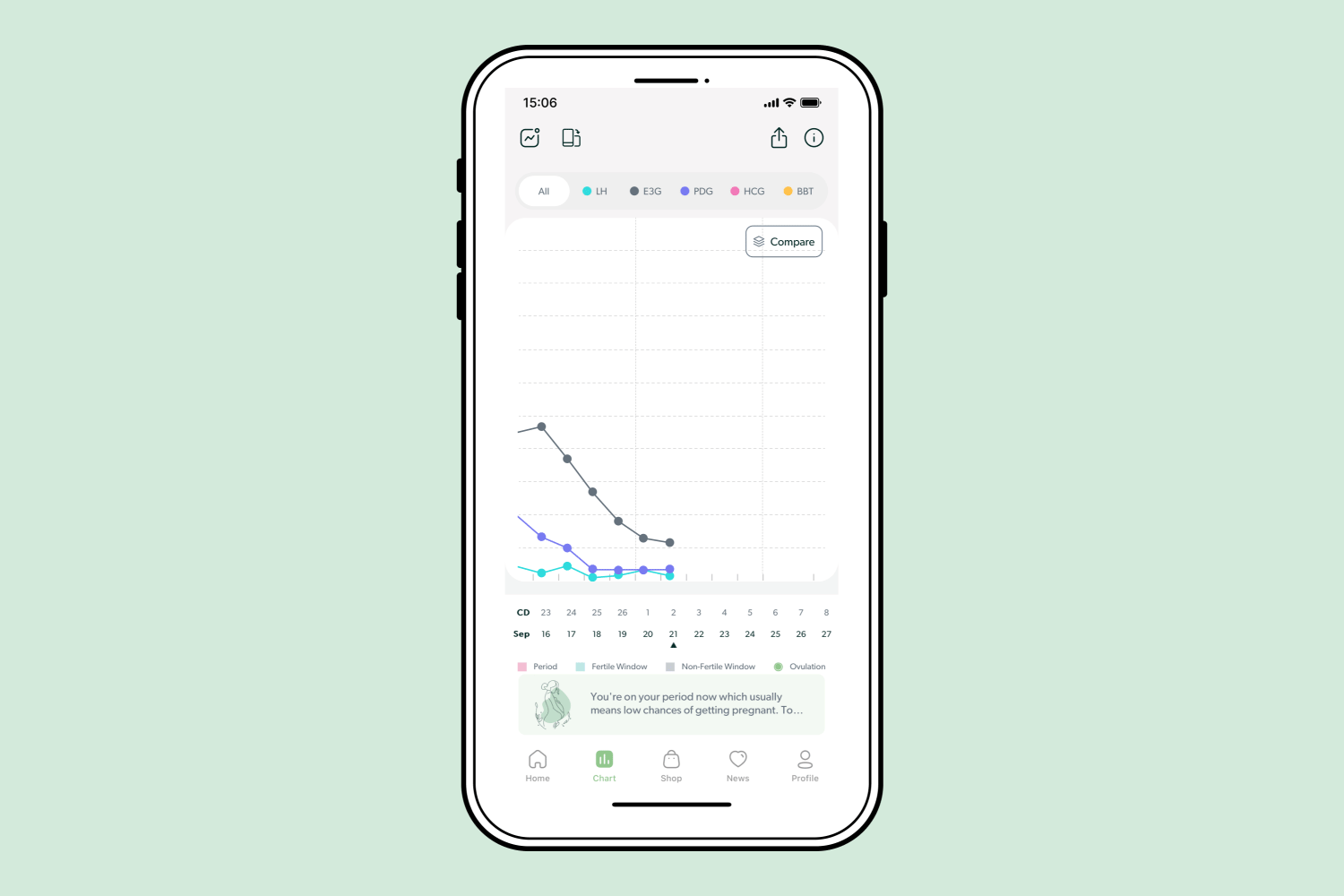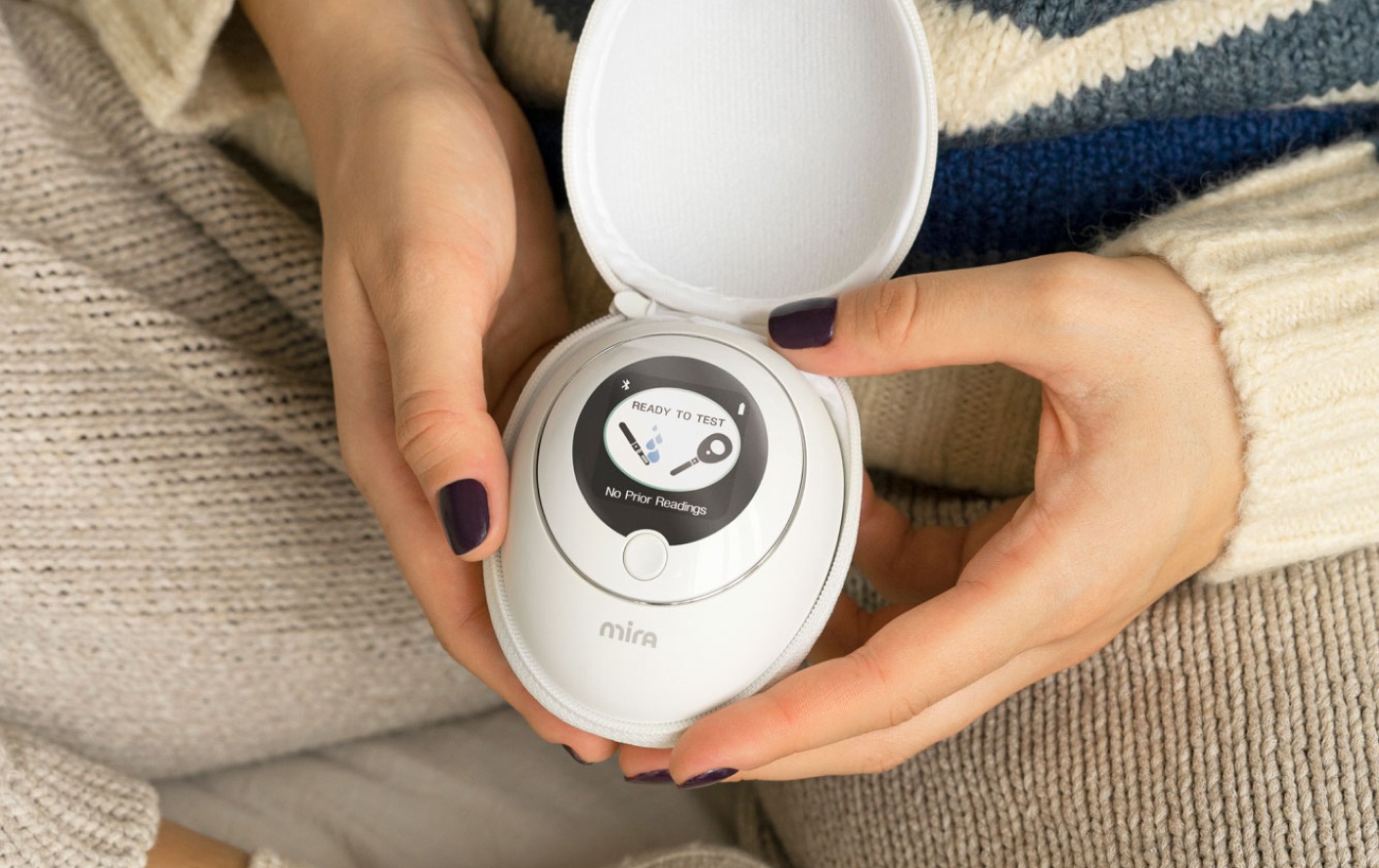The Mira App: How to read LH results?
First things first: what is LH?
Luteinizing hormone (LH) is a key fertility hormone that controls the functions of the ovaries. Midway through the cycle, LH levels surge dramatically in order to trigger ovulation. Ovulation then typically occurs within 24-36 hours of an LH surge.
Simply put: LH is key to predicting ovulation – this is why all the basic OPK strips are based on testing for LH.
What is a normal LH range?
When testing with Mira, LH levels can range anywhere between 0 to 30+ mIU/mL. Although individual measurements can vary, a typical LH surge will measure at 7+ mIU/mL.
Average Ranges for LH hormone are:
| Follicular phase | Ovulatory phase | Luteal phase |
| 1-6 mIU/mL | 7-25 mIU/mL | 2-5 mIU/mL |
How can I check if my LH levels are normal?
In the Mira App, you can visually compare your charts with other people’s average charts – this can help you see if your chart is in range or out of range.

- How? Go to the Charts page. Click on the ‘LH’ name of the hormone on the top of the screen. Choose who you want to compare your charts with: Healthy users, Pregnant, or PCOS segment.
You can also check what typical LH charts look like and how to read them. We created an educational section with common examples and short interpretations.
- How? Go to the Charts page. Click the “!” icon on the top right corner of the charts screen.
If my LH surge is low, does that indicate weak ovulation?
Not necessarily. Hormones fluctuate depending on the person and the cycle. Always keep in mind: the overall trend is more important than the absolute value of a single test. When you ovulate, you should see a sudden increase in LH, although the peak value and pattern can vary greatly. This means you may not have to necessarily reach “high” to ovulate.
In doubt about your LH values on the Mira app? Remember that you can always share your results with one of our certified Fertility Coaches. They will help you understand your Mira charts.
Disclaimer: Fertility coaches do not provide diagnoses, treatment, or medication prescriptions. Our services are designed to offer education, promote well-being, and extend emotional support. Fertility coaches do not have access to your Mira results. You will be required to upload your Mira results prior to your appointment.

A little extra support from an expert can go a long way
Book an online consultation with one of our Hormone Health Coaches.
Schedule NowIs there a possibility that even though LH surges, there is no ovulation?
In most cases, people ovulate when there is an LH surge. Very rarely, some may have an anovulatory cycle, meaning the absence of ovulation. Nevertheless, your LH will still surge, as your ovary is “trying” to make it work – but for some reason, the egg cannot break out from the ovary and it is not released. This happens rarely but is found more frequently in people with Polycystic Ovary Syndrome (PCOS).
I see a surge in the morning and it disappears in the afternoon, why?
LH tends to increase and decrease very sharply. An entire surge can disappear within 12-36 hours. So, it is completely normal to see a surge in the morning and then have it disappear the same afternoon or even the next day. Once you do see the surge, you will likely ovulate within 24-36 hours. This information is key for those who are trying to conceive (TTC) or trying to avoid (TTA) pregnancy.
I have two luteinizing hormones (LH) peaks, does that mean I ovulate twice in one cycle?
According to recent studies, there are three types of gradual onset (2-6 days) of LH surge.
Some of them lead to multiple positive ovulation test results for more than one day. This is why Mira Fertility Tracker is better than over-the-counter ovulation tracking kits. Mira allows you to see your curve and recognize the highest peak based on your quantitative LH level.
Now you can read:
How to read E3G results?
How to read PdG results?
How to read FSH results?
How do I know when to test my hormones?
What is my ‘Fertility Score’ and how does it work?
How do I read Mira charts?
How does Mira predict and confirm ovulation?
Mira’s Editorial Process
All content produced by Mira meets stringent editorial standards, ensuring excellence and accuracy in language and medical precision. Every piece undergoes thorough fact-checking and review by qualified professionals. Check out our full editorial process to learn more.










